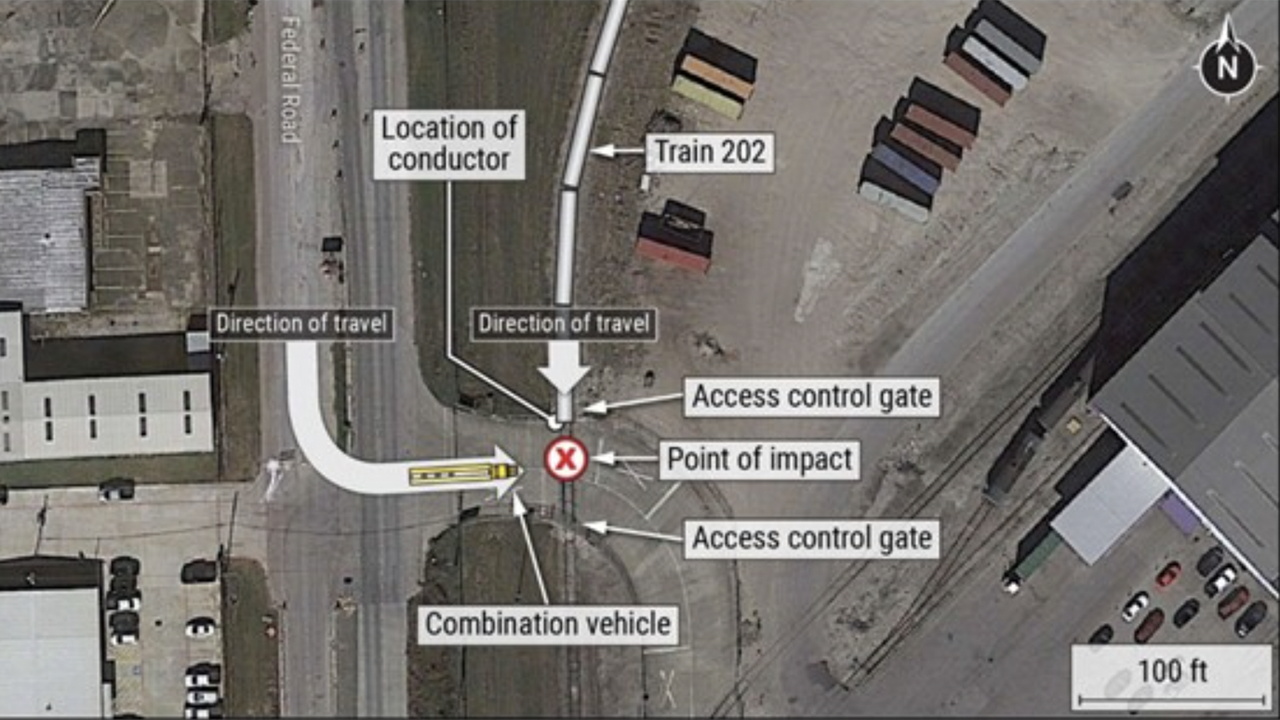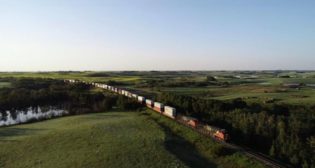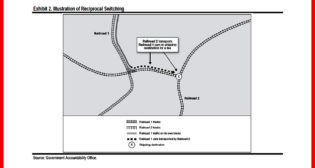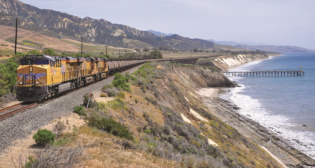
NTSB Releases Report on 2021 Houston Shoving-Movement Accident
Written by Marybeth Luczak, Executive Editor
Overhead photograph of the accident location in Houston, Tex., outside the Greens Port Industrial Park. Watco-subsidiary WDRL provides switching service for the facility. (Courtesy of NTSB; Source: Google Earth)
The National Transportation Safety Board (NTSB) has issued a report and three safety recommendations on shoving movements following its investigation of the Oct. 29, 2021, accident involving a Watco Dock and Rail LLC (WDRL) conductor killed when a train collided with a combination vehicle at a grade crossing in Houston, Tex.
According to the NTSB’s report (download below), a WDRL conductor from WDRL train 202 was killed “protecting a shoving movement” when the train collided with a Gemini Motor Transport-operated combination vehicle at a private highway/rail grade crossing outside the Greens Port Industrial Park, for which Watco-subsidiary WDRL provides switching service. The conductor was riding on the platform of the leading railcar when he was pinned between the train and the combination vehicle as both vehicles simultaneously entered the industrial park’s grade crossing. Since the crossing was equipped with only passive warning devices, including pavement markings and an advance warning sign, “[t]his left the train conductor with a limited amount of time to observe the approaching vehicle before the train entered the crossing,” the agency reported. “Although required by the Gemini Motor Transport’s Driver Code of Conduct to stop before entering a highway-railroad grade crossing, the driver did not.”
The probable cause of the accident, NTSB said, “was the failure of the combination vehicle driver to follow the Gemini Motor Transport Driver Code of Conduct to stop the vehicle before entering the highway-railroad grade crossing,” and contributing to it “was the train’s movement through a passive highway-railroad grade crossing without adequate protection.” The NTSB noted that none of the following contributed to the accident: training and qualifications of the accident conductor and the combination vehicle driver; alcohol or other drug impairment; and performance of the engineer and conductors.
Among the NTSB’s findings:
- “Requiring ground protection at passive grade crossings will assure trains do not enter the crossing until it is clearly seen by the train crew that no traffic is approaching or stopped at the crossing.”
- “Railroads throughout the United States rely on their own operating rules, which allow train crews to ride shoving movements through a highway-railroad grade crossing equipped only with flashing lights or passive warning devices, without the benefit of ground protection, increasing the risk of collision if the train crew or vehicle driver is not aware or does not observe the potential conflict.”
- American Short Line and Regional Railroad Association (ASLRRA) member companies that “may have their own operating rules would also benefit from understanding the circumstances of this accident and the National Transportation Safety Board recommendation to require ground protection during shoving movements to protect railroad workers riding shoving movements through grade crossings equipped only with flashing lights or passive warning devices.”
As a result of its investigation, the NTSB made the following three new safety recommendations:
- To the Federal Railroad Administration: “Revise 49 Code of Federal Regulations 218.99(e)(4)(iv) to require ground protection when conducting shoving movements through highway-railroad grade crossings equipped only with flashing lights or passive warning devices. (R-23-19)”
- To the General Code of Operating Rules Committee, the Northeast Operating Rules Advisory Committee, CN, and the Norfolk Southern: “Revise your operating rules to prohibit railroad employees from riding shoving movements through highway-railroad grade crossings equipped only with flashing lights or passive warning devices unless ground protection is provided. (R-23-20)”
- To the ASLRRA: “Advise your members of the circumstances of this accident and the National Transportation Safety Board recommendation to require ground protection at highway-railroad grade crossings equipped only with flashing lights or passive warning devices. (R-23-21)”



